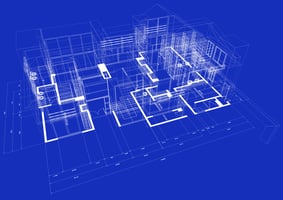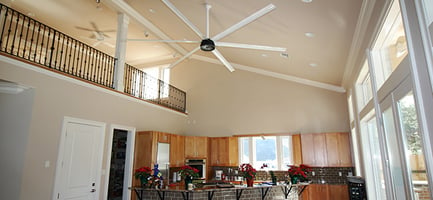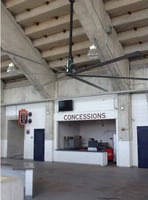MacroAir HVLS ceiling fans offer a very effective solution for maintaining comfort. These...
How High Volume Low Speed Fans Can Reduce Facility CO2 Emissions
Carbon dioxide (CO2) emissions are a serious threat to the world environment: the EPA estimates that in 2013, about 82% of all greenhouse gas emitted in the United States was carbon dioxide. The main activity that releases CO2 into the atmosphere is the use of fuel for energy, especially electricity.
Given the recent increase in measures to reduce greenhouse gas emissions, sometimes called a carbon footprint, it’s important to consider how to minimize CO2 emissions in your facility. HVLS fans can help you do this in several ways.
Reducing the load of HVAC Systems
HVAC systems are great for keeping your building at a comfortable temperature, but they often use a substantial amount of energy to do so. Research from the World Business Council for Sustainable Development shows that 37% of the world’s energy is used for heating, cooling, and ventilation.
HVLS fans can significantly reduce the amount of energy consumed by heating and air conditioning systems. When fan users paired an HVLS fan with their HVAC system, they saw a reduction in air conditioning tonnage of 25% or more. This means your HVAC system uses less energy, which in turn emits less greenhouse gas. See the table below for specific data about savings from HVLS fans in gas, electricity and monetary consumption:
Requiring less energy
One of the best things about HVLS fans is that their low speed means they are highly energy efficient. In fact, some HVLS fans can operate on as little as 31 cents a day for an entire 8-hour shift. Since HVLS fans both consume less energy and allow a building’s HVAC systems to use less energy, the compound effect on CO2 reduction can be substantial.
Minimizing exhaust fans
Exhaust fans are used to expel stale air from a building so that it can be replaced by clean, fresh air from outside. In buildings with poor airflow, however, multiple exhaust fans are required to ensure that air in a facility stays as clean as possible. More exhaust fans mean more energy consumption, which increases CO2 emissions.
Because they increase airflow so efficiently, HVLS fans reduce the number of exhaust fans and pipes needed in a building. By pushing out stale air that often contains mold, chemicals, and other pollutants, HVLS fans also help maintain the good air quality in a building.
HVLS fans and the fight against greenhouse gas
Excessive CO2 emissions are wasteful of natural resources and harmful to the global ecosystem. Thankfully, there are several steps that industrial and commercial facilities can take to lower their emissions and consume less energy. An HVLS fan can help reduce your HVAC system’s consumption of power, improve ventilation, and maintain sufficient air quality in your space.


